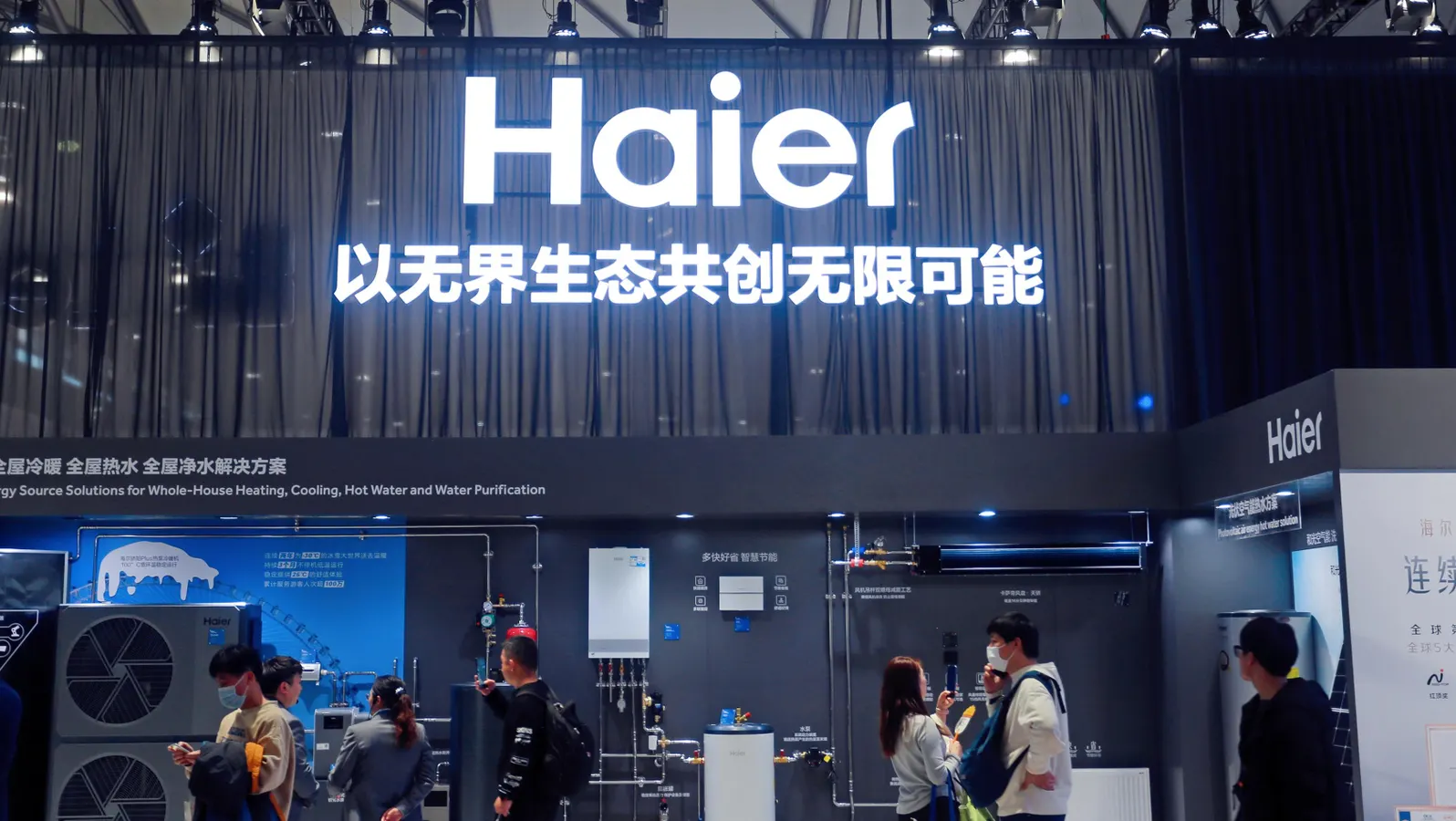By Contributor,Mark Greeven
Copyright forbes

SHANGHAI, CHINA – MARCH 20: People visit Haier booth during the 2025 Appliance & Electronics World Expo (AWE2025) at Shanghai New International Expo Centre on March 20, 2025 in Shanghai, China. Over a thousand enterprises from all over the world gathered at the expo to showcase their latest innovations. (Photo by VCG/VCG via Getty Images)
VCG via Getty Images
Global supply chains are fragmenting, AI adoption is accelerating at breakneck speed, and traditional organizational pyramids are too rigid to keep up with markets that shift overnight. Most companies still deploy AI as an efficiency play—automating tasks or trimming costs. Yet, Haier, the Chinese multinational best known for its home appliances, is leveraging AI to drive new growth engines.
What began in 2005 as an experiment to overcome “big company disease” has evolved into a living “ecosystem operating system” for the AI era. Literally translated, RenDanHeYi means aligning employee value creation with user value. This core principle catalyzed a transformation that made Haier not only a benchmark in China but a reference case by business schools worldwide, and a model integrated by multinationals like GE Appliances and Sanyo.
Through two decades of trial and error, this approach has matured from theory into a proven engine for agility, collaboration, and value creation. Here are three actionable insights for leaders seeking to future-proof their organizations with AI.
Insight 1: Zero distance – Autonomy at scale creates real-time advantage
“Zero distance” is the core of RenDanHeYi. It means removing layers of approval, putting power in the hands of those directly facing the customer, and trusting teams to own outcomes from end-to-end.
Instead of tens of thousands of employees stacked in layers of approval, the company broke itself into thousands of micro-enterprises. Each unit, whether selling refrigerators or developing IoT solutions, was given real decision rights, its own profit-and-loss accountability, and direct contact with users.
MORE FOR YOU
The result was not chaos but accelerated innovation. Haier eliminated more than 12,000 middle managers, giving frontline teams the mandate to sense user needs and respond in real time. In practice, this meant that when customers complained about clunky washing machines, teams could launch iterative designs within weeks, not years. Decisions now happen at the front line where information is the freshest and response matters most. This ability to pivot quickly enabled Haier to enter and win in new markets, outpacing more bureaucratic competitors.
Action for executives: Map where decision rights currently reside. Where are teams still handcuffed by central authority, and how many approvals get stuck at the top? Experiment with shifting authority to the teams closest to users with small pilots. Even if it’s just for a single process or business unit, it could unlock outsized gains in speed and morale.
Insight 2: Think about AI as an engine for new value creation, not just efficiency
Haier’s RenDanHeYi model, which began as an internal reinvention to break silos, has now evolved into a ‘zero boundaries’ system that leverages AI as more than a cost-saving tool. Once that was achieved, Haier moved on to the second phase – “zero boundaries”. While many companies treat AI primarily as a cost-saving tool, Haier saw it as the catalyst for breaking external boundaries.
To do this, Haier developed digital platforms such as HomeGPT, Smart Brain, and ecosystem micro-communities (EMCs) to orchestrate real-time interaction. This interaction is not only across internal teams but with external partners and customers. HomeGPT, for instance, tunes interactions between millions of households and Haier’s appliances, generating insights on user preferences that help ecosystem partners shape services and solutions in real time.
Beyond consumer products, the same principle applies in industrial ecosystems. Haier’s COSMOPlat industrial internet platform now connects 900,000 enterprises, 30,000 developers, and 5,000 ecosystem partners, helping whole industries digitize and upgrade. In each case, AI serves not as a back-office efficiency tool, but as connective tissue across a network of co-creators.
Action for executives: Audit how AI is currently used in your organization. Is it only automating repetitive tasks, or is it enabling new forms of collaboration? Challenge IT and business leaders to think about how your AI infrastructure could become an open marketplace where partners, customers, or even competitors co-create solutions in real time.
Insight 3: Ecosystem health requires outcome-aligned value sharing
Ecosystems only thrive when value is shared fairly. Instead of a traditional bonus or salary grid, pay and even internal transfer pricing at Haier are linked tightly to user value delivered instead of only internal KPIs or activity. This aligns the interests of every micro-enterprise with each other and with consumers, creating a virtuous cycle: better outcomes drive better rewards. As a result, the whole ecosystem becomes stickier and more innovative.
The principle goes beyond payroll. These same mechanisms fuel Haier’s partnerships, encourage internal entrepreneurship, and provide external stakeholders with incentives to stay aligned. Take Haier’s healthcare arm, Yingkang Life. Its collaborations with hospitals, device makers, and AI companies on projects such as brain–computer interface therapies for Parkinson’s patients only work because all parties see value in the outcomes – better treatment effectiveness, faster innovation, and wider patient access.
While each player brings different expertise, RenDanHeYi’s value-sharing ethos ensures no one benefits at the expense of another. The incentives lie in the results achieved together, not the inputs contributed separately.
Actions for executives: Review your current incentive models. Where are people rewarded for outputs instead of outcomes? Where are internal negotiations based on status rather than value created for the end customer? Start experimenting with pilot models that tie incentives more directly to real-world results such as customer satisfaction or measurable business impact.
A new blueprint for business
What makes Haier’s story compelling is how the company has shown that management itself can be a platform for continuous innovation. RenDanHeYi works precisely because it tackles universal challenges: complexity, accelerating change, and the need for continuous innovation.
This journey has not been linear. It took Haier decades to move from a product-centric manufacturer to the boundaryless ecosystem it operates today. But the lesson itself is universal. In an era where supply chains are fragmenting, markets shift overnight, and AI rewrites business models, networks – built on autonomy, co-creation, and outcome-based value sharing for adaptation and speed – are the architecture that have a better chance of being sustainable.
The real question for leaders is not whether to copy Haier, but whether your company is still stuck in pyramid logic—or already building toward a boundaryless ecosystem.
Editorial StandardsReprints & Permissions



